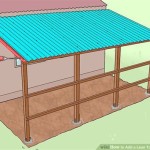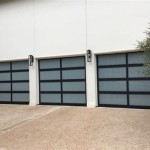Maximizing Storage With Garage Cabinets And Drawers: Instructions
The garage, often a repository for vehicles, tools, seasonal decorations, and various household overflow items, can quickly become cluttered and disorganized. Optimizing storage within this space is crucial for efficiency and accessibility. Garage cabinets and drawers offer a structured and versatile solution for managing diverse items, transforming a chaotic environment into a functional and organized area.
This article provides instructions and guidance on utilizing garage cabinets and drawers to maximize storage, addressing key considerations such as planning, selection, installation, and organization strategies. By following these instructions, individuals can effectively transform their garages into well-organized and productive spaces.
Planning and Assessment for Optimal Storage Solutions
Before investing in garage cabinets and drawers, a thorough assessment of storage needs and space limitations is essential. The initial step involves taking inventory of all items intended for garage storage. Categorizing these items based on usage frequency, size, and type is critical. Items used frequently, such as gardening tools or car maintenance supplies, should be easily accessible. Seasonal decorations and infrequently used items can be stored in less accessible areas.
Measuring the available garage space is crucial to determine the optimal configuration and dimensions of the cabinets and drawers. Consider the existing layout of the garage, including the placement of doors, windows, and utilities. Note any obstructions that could impede the installation or accessibility of the storage units. It is also essential to consider the vertical space available, as maximizing vertical storage is a key strategy for optimizing garage organization.
Develop a detailed plan outlining the desired layout of the cabinets and drawers. Consider the placement of workbenches, tool chests, and other existing storage solutions. The goal is to create a cohesive and functional storage system that complements the existing garage environment. The plan should also incorporate any specific storage requirements, such as storing hazardous materials or oversized items. Secure planning ensures that the selected cabinets and drawers will meet the unique needs.
Selecting the Right Garage Cabinets and Drawers
The selection of garage cabinets and drawers depends on several factors, including budget, storage requirements, and aesthetic preferences. A variety of materials and styles are available, each with its own advantages and disadvantages. Common materials include metal, wood, and plastic.
Metal cabinets and drawers, often constructed from steel, are known for their durability and strength. They are resistant to rust, corrosion, and dents, making them ideal for garages where tools and heavy items are stored. Metal cabinets and drawers are available in a range of sizes and configurations, including wall-mounted units, floor-standing cabinets, and rolling tool chests. Powder-coated finishes provide added protection and aesthetic appeal. Metal cabinets and drawers are a great long-term storage system, although they can be more expensive initially.
Wood cabinets and drawers offer a classic and aesthetically pleasing option. They can be customized with various finishes and hardware to match the garage's décor. Solid wood cabinets are durable but can be susceptible to moisture damage and pests. Particleboard and plywood cabinets are more affordable but may not be as durable as solid wood or metal. When selecting wood cabinets, ensure they are properly sealed and treated to protect them from the elements. Wood provides a more attractive and customizable look, but requires more ongoing maintenance.
Plastic cabinets and drawers are a lightweight and affordable option. They are resistant to moisture, chemicals, and pests, making them suitable for storing a variety of items. Plastic cabinets are available in various sizes and configurations, including stackable bins, shelving units, and rolling carts. While plastic cabinets are easy to clean and maintain, they may not be as durable as metal or wood cabinets. Plastic is great for storing smaller or lighter items, but it may lack the strength needed for heavy-duty storage.
Beyond the construction material, it's important to look for features like adjustable shelves, soft-close hinges, full-extension drawers, and locking mechanism for security. These features enhance the functionality and convenience of the storage system. Consider the load capacity of the shelves and drawers to ensure they can accommodate the weight of the stored items.
Installation and Organization Strategies
Proper installation of garage cabinets and drawers is crucial for ensuring their stability and longevity. Wall-mounted cabinets should be securely attached to wall studs using appropriate hardware. Floor-standing cabinets should be leveled and anchored to the wall to prevent tipping. Rolling cabinets should have locking casters to ensure they remain in place.
Before installation, prepare the garage floor and walls by cleaning and leveling the surfaces. Repair any cracks or damage to the walls and ensure they are properly painted or finished to protect them from moisture. Install any necessary electrical outlets or lighting fixtures to enhance the functionality of the storage area. Refer to the manufacturer's instructions for specific installation guidelines.
Optimal organization is essential for maximizing the storage capacity of garage cabinets and drawers. Use drawer dividers and organizers to compartmentalize small items, such as tools, hardware, and accessories. Label each drawer and cabinet to easily identify the contents. Considere using clear containers to store items, allowing visibility of contents without opening the container.
Vertical storage is a key strategy for maximizing space in the garage. Utilize wall-mounted shelving units to store items that are not frequently used. Hang tools and equipment on the walls using hooks and pegboards. Install overhead storage racks for storing seasonal decorations and other bulky items. Consider investing in a ladder or step stool to safely access items stored in high places.
Implement a system for regularly decluttering and reorganizing the garage. Discard or donate items that are no longer needed. Rotate seasonal items to keep frequently used items within easy reach. Conduct a thorough cleaning of the garage at least once a year to remove dust, debris, and pests. Regular clean-up helps maintain a healthy and organized environment.
Consider implementing a color-coding system to further enhance organization. Designate different colors for different categories of items, such as tools, gardening supplies, or automotive accessories. This makes it easy to quickly locate items and maintain order. Take advantage of available accessories, such as tool holders, wire baskets, and magnetic strips, to optimize the storage of specific items. These accessories can help maximize space and improve accessibility.
Proper lighting is essential for creating a functional and safe garage environment. Install adequate lighting fixtures to illuminate the storage area and workbenches. Consider using LED lights, which are energy-efficient and long-lasting. Position the lights to minimize shadows and provide ample illumination for working and accessing stored items.
Safety should always be a primary concern when organizing the garage. Store hazardous materials, such as chemicals and flammable liquids, in designated cabinets that are properly labeled and ventilated. Keep these items out of reach of children and pets. Ensure that all storage units are securely installed and that heavy items are stored on lower shelves to prevent accidents. Keep walkways and access points clear of obstructions to minimize the risk of trips and falls.
The garage environment often experiences temperature fluctuations and humidity, which can impact the condition of stored items. Consider using dehumidifiers or climate control systems to regulate the temperature and humidity levels in the garage. Store sensitive items, such as electronics and paper documents, in airtight containers to protect them from damage. Regularly inspect stored items for signs of mold, mildew, or pest infestation.
Effective garage organization is an ongoing process. As storage needs evolve over time, it is important to adapt and refine the storage system. Regularly assess the organization of the garage and make adjustments as needed. Consider reconfiguring the cabinets and drawers to better accommodate changing storage requirements. By implementing these strategies, individuals can maintain a well-organized and efficient garage space for years to come.
By adhering to these instructions and guidelines, indiduals can significantly improve the functionality and organization of their garages, transforming them from cluttered spaces into efficient and productive environments, where tools and belongings are readily accessible when needed.

The Ultimate Guide To Garage Shelving And Storage Solutions

15 Effective Garage Organizing Ideas To Maximize Your Space

How To Install Cabinets In Garage The Ultimate Guide Vevor Blog
:max_bytes(150000):strip_icc()/Garage-pegboard-wall-and-tool-cart-2d9d9a1385514ca884f026e148aee9cf-c4b2ebdc003d4fdfac5e1a0ee9f8de62.jpg?strip=all)
52 Diy Garage Storage Ideas To Stay On Top Of The Clutter

Locker Shelf Garage Cabinets Diy Wooden Storage Install Guide Kit

4 Smart Ways To Maximize Garage Storage In Tight Spaces

Garage Storage Cabinets Design And Install Closet Factory

Garage Storage And Organization Ideas
:max_bytes(150000):strip_icc()/Garage-storage-units-705e1388ed354599addde39f024c00a6.jpg?strip=all)
52 Diy Garage Storage Ideas To Stay On Top Of The Clutter

Ideas About Garage Cabinets Rethink Storage Plus
Related Posts








